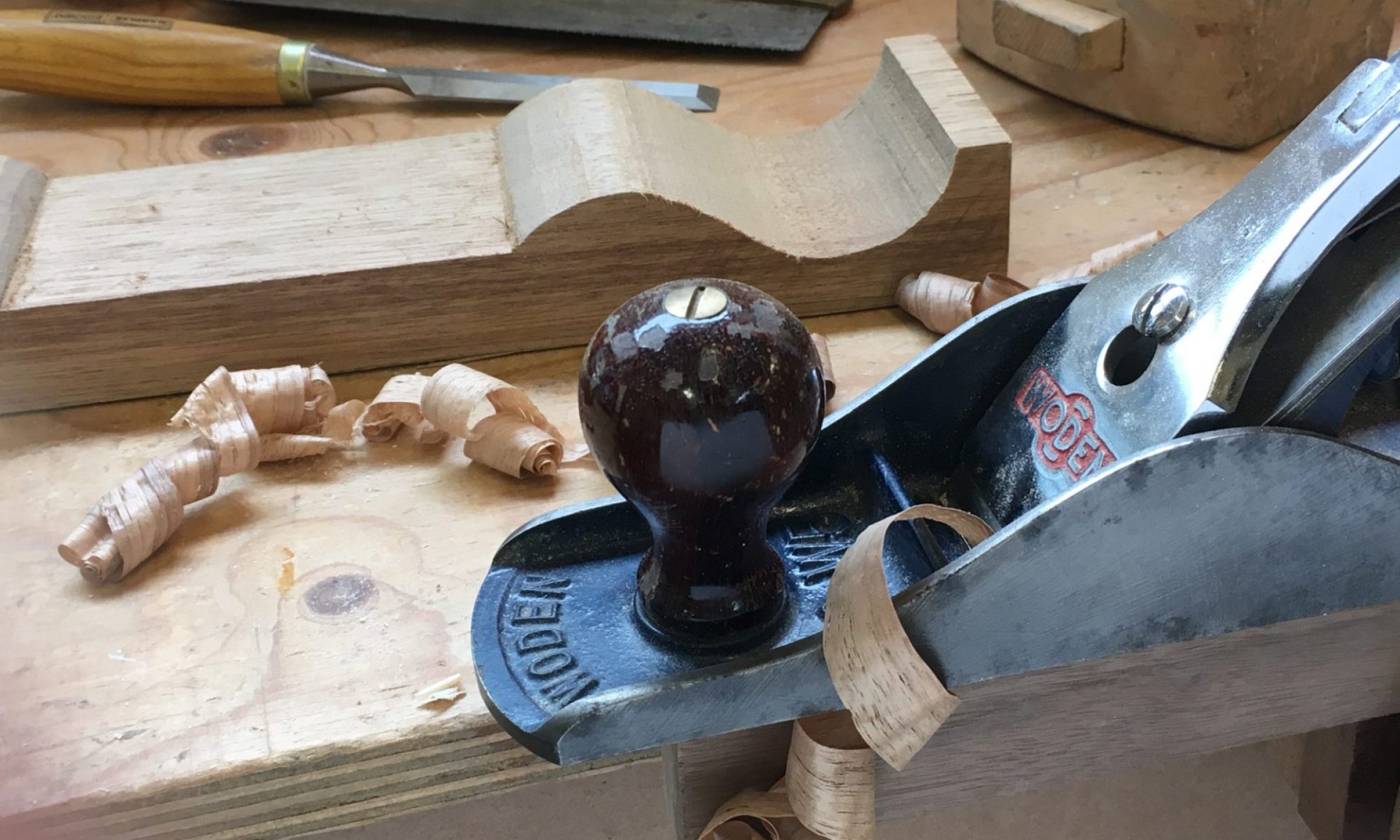So, some clear marking out is called for here; generally the slope of the dovetails is represented by a gradient of 1:8 for hardwood and 1:6 or 7 for a softwood. The sliding bevel is used to mark this line after the tails have been set out along a gauged line to fit the width of the board to their most pleasing arrangement.
The dovetails are then cut with a small saw (rip-set teeth if possible) before transferring their profiles to the other part of the joint, in this case, the drawer fronts (see next post).

2 pairs of drawer sides, sliding bevel and dovetail saw


